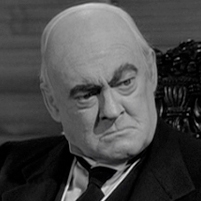From Dickens and Capra: Two Fictional Characters with Lessons for Today
Tuesday, January 19, 2010
 Lionel Barrymore as Mr. Potter in It's A Wonderful Life
Lionel Barrymore as Mr. Potter in It's A Wonderful Life
Mr. Merdle and Mr. Potter would be right at home today confronting the roiling contempt many Americans hold for bankers and financial schemers. More than 150 years ago, Charles Dickens created the character of Mr. Merdle in the serial novel Little Dorrit (1855-1857), which told the story of a young woman trying to survive poverty and other ordeals. Her troubles included investing in Mr. Merdle’s bank, considered a sound investment—until it’s revealed Merdle is a fraud who relies on Ponzi schemes to make his fortune.
“Much of the British elite and the main characters of the novel are left bankrupt,” writes Michael Hittleman at Truthout. “He is every inch the 19th century fictional version of Bernie Madoff …except that Merdle kills himself upon being exposed.
Almost a hundred years later, in 1946, filmmaker Frank Capra created one of the most despised financiers ever to grace the silver screen: Mr. Potter. The villain of It’s a Wonderful Life, Mr. Potter (played by Lionel Barrymore) is the big banker in the little town of Bedford Falls who seeks to destroy the community bank run by George Bailey (played by Jimmy Stewart). Mr. Potter is unabashedly greedy and cares only about the accumulation of wealth—a portrayal deemed Communist by the FBI, which took exception to Capra’s anti-consumerist tale. Nonetheless, villain though he is, Potter, like the bankers of 2010, is never punished for his misdeeds.
-David Wallechinsky
Everything Solid Melts: Dickens and Madoff (by Michael Hittleman, Truthout)
Little Dorrit Gives Wall Street a Haircut (by Les Leopold, Huffington Post)
Mister Potter (Wikipedia)
FBI Considered "It's A Wonderful Life" Communist Propaganda (by Will Chen, Wise Bread)
- Top Stories
- Unusual News
- Where is the Money Going?
- Controversies
- U.S. and the World
- Appointments and Resignations
- Latest News
- Trump to Stop Deportations If…
- Trump Denounces World Series
- What If China Invaded the United States?
- Donald Trump Has a Mental Health Problem and It Has a Name
- Trump Goes on Renaming Frenzy






Comments